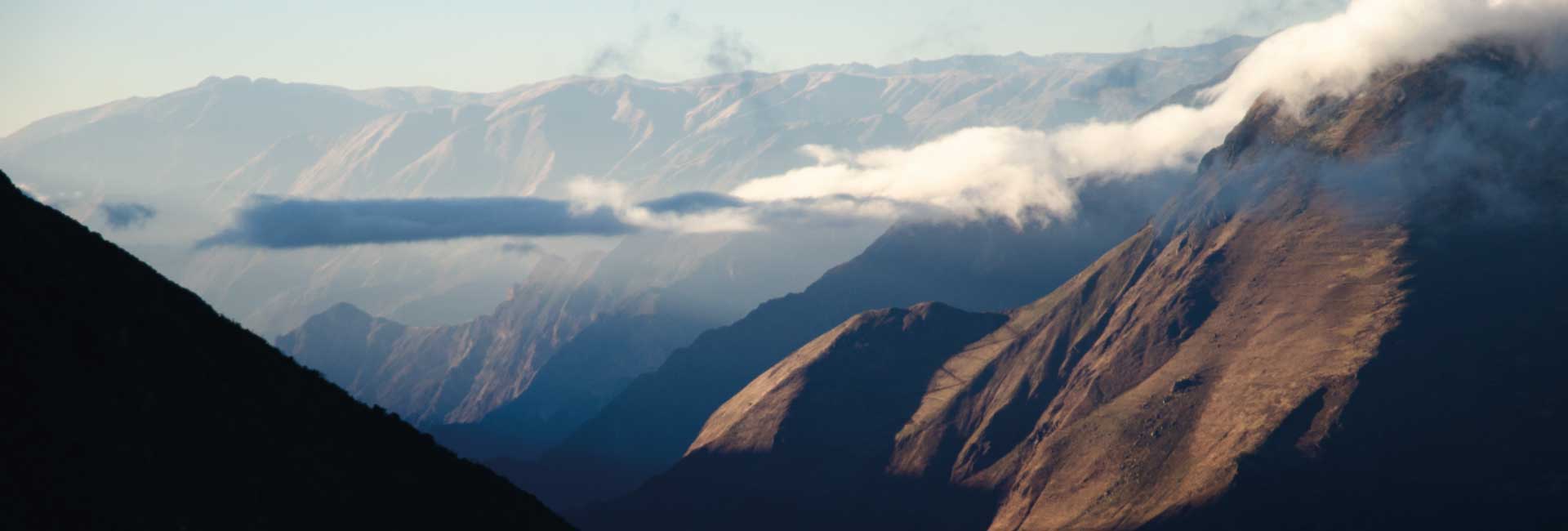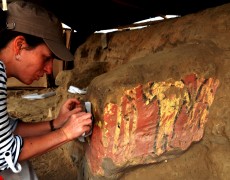
Ancient Temples
The Ychsma Project, directed by Dr Peter Eeckhout of the Université Libre de Bruxelles (ULB), has carried out archaeological field research at Pachacamac, Peru since 1999.
This pre-Columbian monumental site covers an area of almost 600 hectares. It lies at the mouth of the Lurín River, close to the Pacific shore, some 30 km south of Lima and is considered to be one of the most important ancient settlements of the Central Andes, on a par with Machu Picchu, Tiahuanaco, Chavín de Huantar, Chan Chan and the Nazca Lines.
This is the first wall paintings discovered in Pachacamac since 1938.
Eeckhout, director of the Archaeological Research Project, approved by the Directorate General of Archaeological Heritage Property of the Ministry of Culture, on 28 February this year- reported that in this 2014 season has excavated an area of 300 square meters, in which it has found a structure with walls decorated with murals that could be a temple in view of the ceremonial pattern that presents because they have found a lot of precious offerings lying on the floor of the rooms and corridors of the sanctuary.

The conservation of those architectural structures brought several difficulties, mainly related to their protection during the excavation. Variations in light, temperature and humidity were the cause of paint loss.
Pachacamac is an archaeological site situated 3 kilometres from the sea, the maximum average temperature in summer (December-March) is 28°C and the moisture levels are high ranging from 65% relative humidity to 100%.
A new field season has started in Pachacamac, and the structures have now been uncovered. In order to prevent further loses, the teams idea was to cover the painted walls (or more precisely the cardboard protections) with reflective sheets.
With the aim of using the reflective side to reflect sunlight away from the structure and reduce temperature variations, whilst utilising this and the thickness of our multi layered Lightite® sheeting to reduce humidity.

Easy Grow were happy and excited to collaborate with their research, which could result in the diffusion of a new method for the protection of archaeological sites.
After consultation with us it was agreed that three different types of sheeting would be trialled in the initial experiment – Silver Lightite®, Silver Insuliner & White Lightite®.
A small test adobe wall (about 60 cm high, 30 cm width) would be built and it would be protected with a cardboard structure.
On this they would fix the three different reflective sheets (see rough draft to the right). In order to compare temperature and relative humidity values under the sheets, they will place as many thermohygrometers as sheets they have. Comparatively, the same measurements will be processed out of the sheets.
If the experiment was successful then 50 meters (125 cm width) of the optimum sheeting would be used to protect all the painted walls that will have to be uncovered this year.
Testing lightite sheetingIn early march the tests were set up and ready to be monitored for both temperature and humidity whilst being protected by our three different types of Lightite® sheeting, and one with the original cardboard setup and no protective sheeting. The hope was that the utilisation of the reflective sheeting would reduce both humidity levels and temperature variations.
After a week the first results of the four tests were in. The results proved to be very interesting and encouraging! There is a clear difference between the three tests with the reflective sheeting and the cardboard test. Out of the three reflective sheets trialled the White Lightite® offered the best result regarding the temperature and the Silver White Lightite® the best result regarding the relative humidity. They didn’t experience any problem with condensation during the tests.

Kusi told us “The results are really awesome! Regarding the outside conditions, without any kind of protection, the reflecting sheeting is really useful. And without doubt, the Silver White Lightite® has proved to be the best option.”
Our Lightite® sheeting offered excellent control of temperature variations and all our sheeting showed significant reduction in humidity levels. Silver lightite® showed exceptional results with almost 15% reduction in humidity variation and showing a temperature variation of just 3°C.
